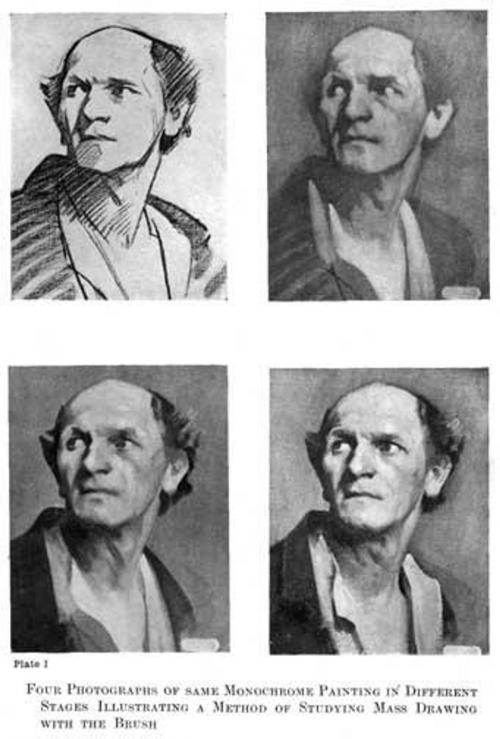Practice and Science of Drawing (Illustrated)
Nonfiction, Home & Garden, Crafts & Hobbies, Art Technique, Drawing, Art & Architecture, General Art| Author: | Harold Speed | ISBN: | 1230000309281 |
| Publisher: | Consumer Oriented Ebooks Publisher | Publication: | March 5, 2015 |
| Imprint: | Language: | English |
| Author: | Harold Speed |
| ISBN: | 1230000309281 |
| Publisher: | Consumer Oriented Ebooks Publisher |
| Publication: | March 5, 2015 |
| Imprint: | |
| Language: | English |
Permit me in the first place to anticipate the disappointment of any
student who opens this book with the idea of finding "wrinkles" on how
to draw faces, trees, clouds, or what not, short cuts to excellence in
drawing, or any of the tricks so popular with the drawing masters of our
grandmothers and still dearly loved by a large number of people. No good
can come of such methods, for there are no short cuts to excellence. But
help of a very practical kind it is the aim of the following pages to
give; although it may be necessary to make a greater call upon the
intelligence of the student than these Victorian methods attempted.
It was not until some time after having passed through the course of
training in two of our chief schools of art that the author got any idea
of what drawing really meant. What was taught was the faithful copying
of a series of objects, beginning with the simplest forms, such as
cubes, cones, cylinders, &c. (an excellent system to begin with at
present in danger of some neglect), after which more complicated objects
in plaster of Paris were attempted, and finally copies of the human head
and figure posed in suspended animation and supported by blocks, &c. In
so far as this was accurately done, all this mechanical training of eye
and hand was excellent; but it was not enough. And when with an eye
trained to the closest mechanical accuracy the author visited the
galleries of the Continent and studied the drawings of the old masters,
it soon became apparent that either his or their ideas of drawing were
all wrong. Very few drawings could be found sufficiently "like the
model" to obtain the prize at either of the great schools he had
attended. Luckily there was just enough modesty left for him to realise
that possibly they were in some mysterious way right and his own
training in some way lacking. And so he set to work to try and climb the
long uphill road that separates mechanically accurate drawing from
artistically accurate drawing.
CONTENTS
I. INTRODUCTION
II. DRAWING
III. VISION
IV. LINE DRAWING
V. MASS DRAWING
VI. THE ACADEMIC AND CONVENTIONAL
VII. THE STUDY OF DRAWING
VIII. LINE DRAWING: PRACTICAL
IX. MASS DRAWING: PRACTICAL
X. RHYTHM
XI. RHYTHM: VARIETY OF LINE
XII. RHYTHM: UNITY OF LINE
XIII. RHYTHM: VARIETY OF MASS
XIV. RHYTHM: UNITY OF MASS
XV. RHYTHM: BALANCE
XVI. RHYTHM: PROPORTION
XVII. PORTRAIT DRAWING
XVIII. THE VISUAL MEMORY
XIX. PROCEDURE
XX. MATERIALS
XXI. CONCLUSION
Permit me in the first place to anticipate the disappointment of any
student who opens this book with the idea of finding "wrinkles" on how
to draw faces, trees, clouds, or what not, short cuts to excellence in
drawing, or any of the tricks so popular with the drawing masters of our
grandmothers and still dearly loved by a large number of people. No good
can come of such methods, for there are no short cuts to excellence. But
help of a very practical kind it is the aim of the following pages to
give; although it may be necessary to make a greater call upon the
intelligence of the student than these Victorian methods attempted.
It was not until some time after having passed through the course of
training in two of our chief schools of art that the author got any idea
of what drawing really meant. What was taught was the faithful copying
of a series of objects, beginning with the simplest forms, such as
cubes, cones, cylinders, &c. (an excellent system to begin with at
present in danger of some neglect), after which more complicated objects
in plaster of Paris were attempted, and finally copies of the human head
and figure posed in suspended animation and supported by blocks, &c. In
so far as this was accurately done, all this mechanical training of eye
and hand was excellent; but it was not enough. And when with an eye
trained to the closest mechanical accuracy the author visited the
galleries of the Continent and studied the drawings of the old masters,
it soon became apparent that either his or their ideas of drawing were
all wrong. Very few drawings could be found sufficiently "like the
model" to obtain the prize at either of the great schools he had
attended. Luckily there was just enough modesty left for him to realise
that possibly they were in some mysterious way right and his own
training in some way lacking. And so he set to work to try and climb the
long uphill road that separates mechanically accurate drawing from
artistically accurate drawing.
CONTENTS
I. INTRODUCTION
II. DRAWING
III. VISION
IV. LINE DRAWING
V. MASS DRAWING
VI. THE ACADEMIC AND CONVENTIONAL
VII. THE STUDY OF DRAWING
VIII. LINE DRAWING: PRACTICAL
IX. MASS DRAWING: PRACTICAL
X. RHYTHM
XI. RHYTHM: VARIETY OF LINE
XII. RHYTHM: UNITY OF LINE
XIII. RHYTHM: VARIETY OF MASS
XIV. RHYTHM: UNITY OF MASS
XV. RHYTHM: BALANCE
XVI. RHYTHM: PROPORTION
XVII. PORTRAIT DRAWING
XVIII. THE VISUAL MEMORY
XIX. PROCEDURE
XX. MATERIALS
XXI. CONCLUSION















